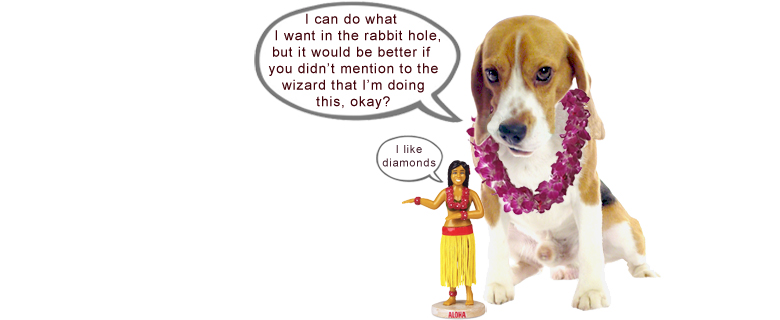How to Spot a Diamond Bargain
Here’s Everything You Need to Know
Surprise #1: Price –The price of a diamond is based on its rarity, not its beauty.
Surprise #2: Color – Colorless diamonds are more rare than lightly colored diamonds, so colorless diamonds are more expensive than lightly colored ones. BUT… highly colored diamonds are more rare than colorless diamonds, so highly colored diamonds are more expensive than colorless. Crazy, huh?
Surprise #3: Clarity –The clarity of a diamond is another expression of its rarity, not its beauty. The following diamond clarities can be determined ONLY under 10x magnification. Without 10x magnification, these 8 clarities of diamonds look identical. But the price differences are tremendous. 1
1.Flawless
2. Internally Flawless
3. VVS1
4. VVs2
5. VS1
6. VS2
7. SI1
8. SI2
Surprise #4: Cut –The beauty of a diamond is determined primarily by its cut.
But most diamonds are cut incorrectly, because diamonds are sold by weight, not by beauty.
A diamond cutter will always cut the rough diamond crystal to maximize its weight. Consequently, the only diamonds that will be cut properly are those rough diamonds whose natural shape dictate that they be cut correctly.
Surprise #5: Jewelers who pay cash get first pick of the diamonds.
Most jewelers buy from diamond dealers and ask for 30-day, 60-day, or 90-day payment terms. But a handful of jewelers buy directly from the diamond cutters – eliminating the middleman markup – and they pay cash. Today. Right now. “Here’s your money. Have a great day. It’s been wonderful doing business with you.”
Surprise #6: Beauty –A correctly-cut diamond of less-rare color and less-rare clarity will always be more beautiful than an incorrectly-cut diamond that is both flawless and colorless. This is because the sparkle and scintillation of a correctly-cut diamond makes the color and clarity of that diamond inconsequential. You were born with the ability to judge the beauty of a diamond. Use your eyes. Trust what you see. Don’t be misled by statements of “rarity.”
Are you finding it hard to believe that most diamonds are cut incorrectly?
Surprise #7: Value– Modestly-priced 1-carat diamonds sell for $825,000 an ounce. 2
The highest price on record for pure gold is just $1,895 an ounce. But if you were given a 1-ounce cube of pure gold and you had the ability to cut it into any shape you wanted, but the gold you cut away would be lost forever, what shape would you prefer? I’m betting you’d prefer a cube. Am I right? Now you’re a diamond cutter. The material you are about to grind into powder is worth $825,000 an ounce. How much do you want to grind away?
Diamond cutters routinely cut diamonds incorrectly because diamonds are sold by weight, not by beauty.
But if you know where to go, it’s easy to get noticeably better diamonds at obviously better prices.
© Indiana Beagle, Wizard of Ads, 2018
Now for the good news: The Wizard has been the world’s most highly sought-after ad writer in the jewelry business for more than 30 years. As a result, he knows what is what and who is who all across the U.S. and Canada. And because I’m always at his side, I know, too. So if ever you’re thinking of buying a diamond and want to know where in your area the wizard would go, drop me an email, tell me where you are, and I’ll suggest where you should visit. Aroo! Indy@WizardOfAds.com
1 $5,850 is the average price of a 1-carat diamond in the average jewelry store. The current price of a perfectly cut, colorless, flawless 1-carat diamond is about $15,000.
2 142 1-carat diamonds at $5,850 each would be $830,700 for that one ounce.
A carat is a unit of weight. There are 141.748 carats in an ounce. But that’s diamonds.
Karat spelled with a K is how we measure the purity of gold.
Karat has no relationship to carat. 24-karat gold is 100% pure and is always yellow. 12-karat gold is 50% gold/50% alloy. 18-karat gold is 75% gold/25% alloy. 14-karat gold is 58.3% gold/41.7% alloy. White gold is made by using nickel, manganese, or palladium as the alloy. Rose gold (pink) is made by using copper as the alloy. Green gold is made by using – surprisingly – silver as the alloy. Go figure. – Indy
